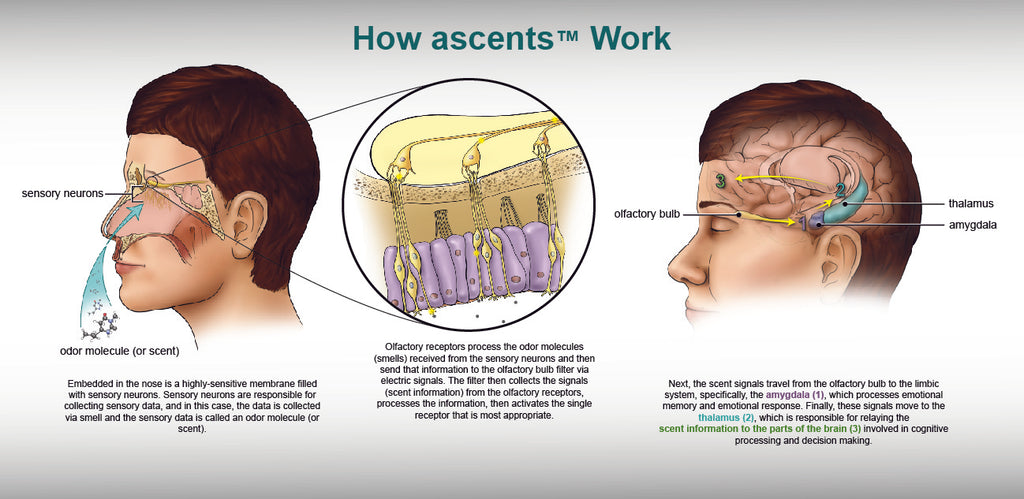The Science Behind Ascents® Clinical Aromatherapy
What is clinical aromatherapy?
Clinical aromatherapy is an exacting science that is used by trained medical professionals and is based on protocols that are the product of scientific research. Clinical aromatherapy is used to supplement and at times replace pharmaceuticals.
How does clinical aromatherapy work?

Embedded in the nose is a highly-sensitive membrane filled with sensory neurons. Sensory neurons are responsible for collecting sensory data, and in this case, the data is collected via smell and the sensory data is called an odor molecule (or scent).
Olfactory receptors process the odor molecules (smells) received from the sensory neurons and then send that information to the olfactory bulb filter via electric signals. The filter then collects the signals (scent information) from the olfactory receptors, processes the information, then activates the single receptor that is most appropriate.
Next, the scent signals travel from the olfactory bulb to the limbic system, specifically, the amygdala (1), which processes emotional memory and emotional response. Finally, these signals move to the thalamus (2), which is responsible for relaying the scent information to the parts of the brain (3) involved in cognitive processing and decision making.
Ascents® Clinical Aromatherapy: Sent with Intent™

Simply put, when we are exposed to different scents, a series of events begins to unfold that starts in the nose, and is carried out by the brain -- the body’s control center. These events include biochemical reactions, such as the release of hormones, that can trigger positive physiological changes including relaxation, better sleep, enhanced concentration and increased energy.





